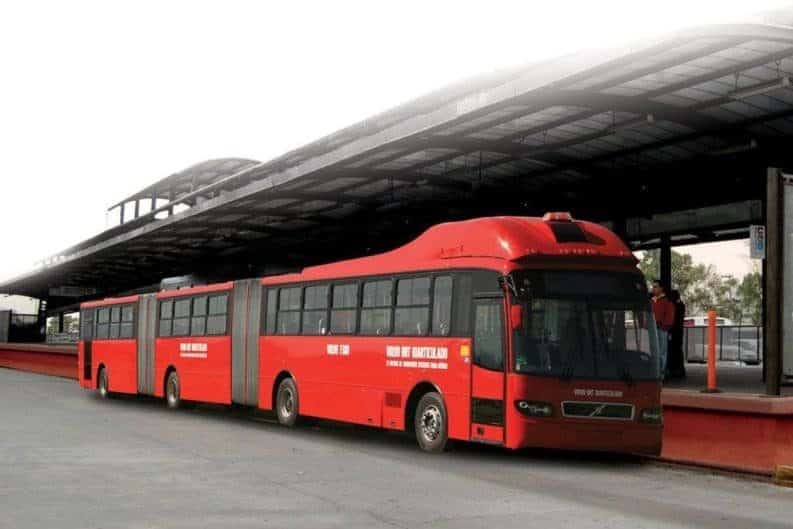No, this is not a joke. Volvo has created a passenger vehicle called the Gran Arctic 300 Bus and it measures ninety-eight freakin’ feet long. Let that sink in for a second. That’s close to one-third of a football field, eight feet longer than the distance between home and first base, or one and a half bowling lanes long. It’s sort of like one of those articulated buses that you might have seen traveling through a city, but is instead bi-articulated. Which means it has two of those accordion-like joints, not just one. Bi-articulated buses aren’t found in America, though, so you might not be familiar with them. But, if you’ve ever visited Europe or Latin American cities, chances are you’ve seen a couple of these on the road.
Why am I telling you about it, then, if you can’t see it on your hometown highways and by-ways? Because, it’s way too cool not to!
A Bi-Articulated Beaut’
Thanks to its bi-articulated nature, Brazil’s Gran Arctic 300 Bus is considered the world’s longest bus. The two joints are necessary for turning purposes because putting one joint in the center of a 98 ft. bus would give it a horrendous turning radius. Ultimately, it would feel like you’re trying to turn an aircraft carrier around a small pond.
Which is also why you don’t see buses like this in America. Imagine watching one of these trying to navigate through the cramped streets of Boston or New York? Hell no. Bi-articulated buses like this have a dedicated route they follow, so they don’t clog-up traffic in major cities.
Why go through the trouble? Because when it comes to public transportation, the more people that can fit – the merrier!
Passenger Space and Other Deets
Well, maybe “more the merrier” isn’t the right phrase if you’re one of the passengers on this rig. After all, you could be riding with 300 other grumpy passengers. At that point, it’s no longer cool – in fact, it’s a glorified sardine can on wheels.
The Gran Arctic 300 has an average speed of 22 mph. If you think that’s slow, don’t forget the buses in New York creep along at 10 mph. Combine that speed with the not yet completed TransBrasil line (a 14-mile route through the center of Rio de Janeiro) and the passenger space, and this bus can carry 50,000 passengers per hour in each direction, adding up to a whopping 820,000 people per day. That subway in NY that is infamous for being crammed? It only carries around 225,000 people per day.
Just wanted to provide that information so you could garner a mind-numbing perspective for the effectiveness of this vehicle.
Who the Hell Will Use This Behemoth?!
This bus will be found on the road sometime next year. But, if we aren’t going to see that in America, then who will? Well, the Gran Arctic 300 is going to serve a very niche base: the Bus Rapid Transit systems, which have been around since the early 1990s. More specifically, you’ll find it in Rio de Janeiro on that TransBrasil line because of the dense population in that area. The TransBrasil line will have 16 stations dotted along its route, so the bus won’t have to waste time stopping to pick up passengers.
Leave it to Volvo to, yet again, figure out a way to better serve the world’s community through its automotive advancements.




